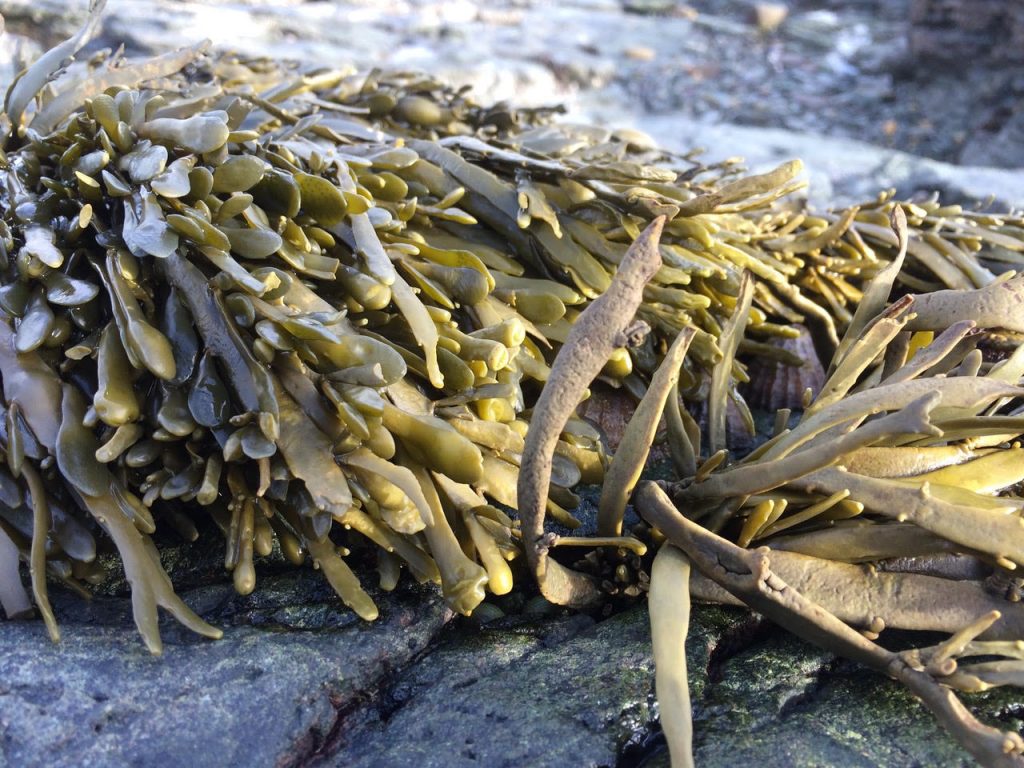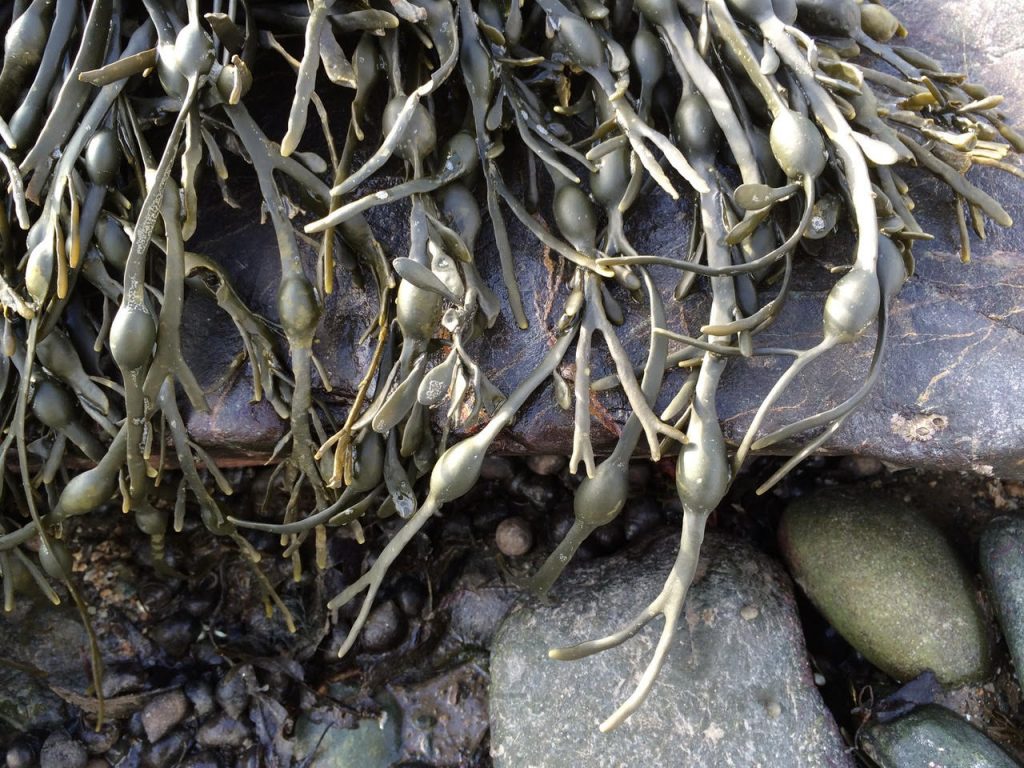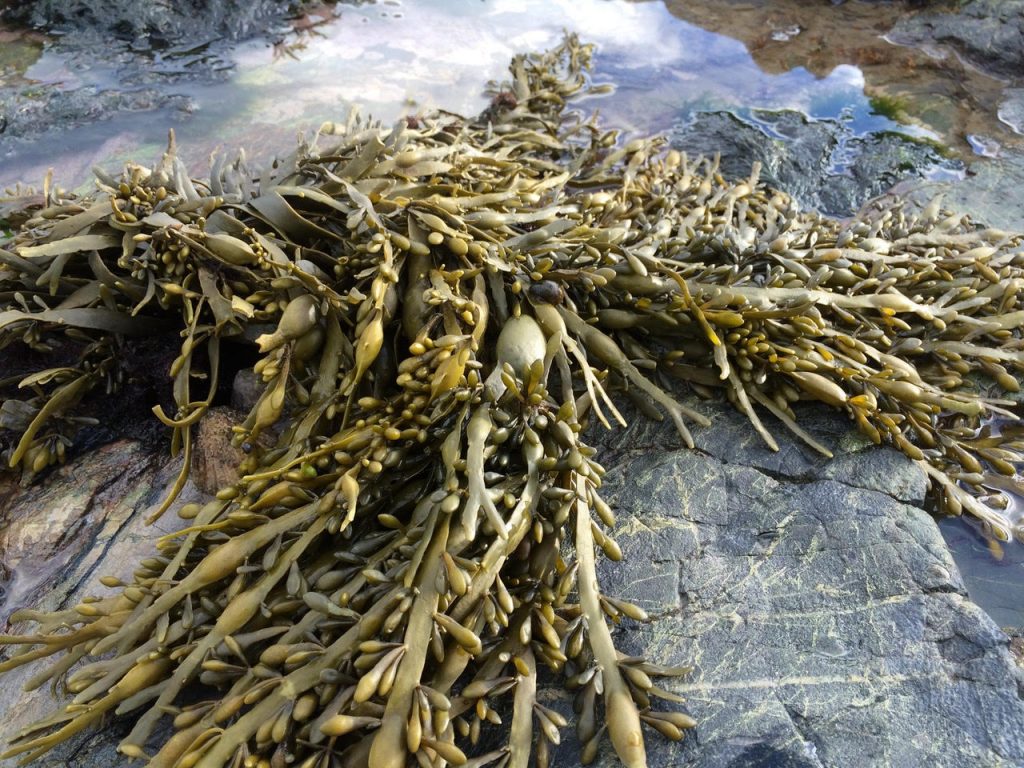❀ Common names: Rockweed, knotted wrack, egg wrack, knotted kelp, yellow tang
❀ Aphia ID#: 145541

Introduction to Ascophyllum nodosum
What is Ascophyllum nodosum?
Ascophyllum nodosum also known as egg wrack, is a canopy forming brown seaweed (algae), that in large quantities can provide habitat, food, and shelter for many marine organisms (Fegley 2001). It is commonly found on intertidal rocky shores around the temperate North Atlantic Ocean where it forms vast perennial stands that can blanket the shoreline. It is only found on sheltered shores due to its inability to tolerate higher levels of wave action, and is common in large quantities on the Eastern coast of North America from Labrador Candada down to Long Island Sound (Sheader et al. 1974). Ascophyllum is a long-lived species (with some estimates of >50 years), it dominates the rocky intertidal (Davies et al. 2007). Reaching a maximum size of two meters, Ascophyllum can greatly influence the environment around it, by for example, attenuating wave energy, trapping sediments, and providing habitat, nursery and feeding grounds for other organisms. In addition, Ascophyllum is also notable as it uses defensive chemicals known as phlorotannins to deter grazers such as limpets and snails from eating its tissues.
How to identify it/ species description
Ascophyllum made up of fronds (both long and short) with air bladders along the central axis of the frond. These air bladders, also known as pneumatocysts, serve to keep the organism upright when the tide is in, allowing the frond to be maximally exposed to sunlight. It anchors itself to the sea floor/rocks using a strong holdfast, akin to a root but serves only for attachment (Sharp 1987). It is olive green to brown in color, but this can vary both within and between shores, the exact reason for color differentiation is unknown. Receptacles, the reproductive organs of Ascophyllum, can be found as small branches that extend from the central axis of the alga, and can reach a high proportion of the vegetative mass of the individual. When opened up if the receptacle has an orange tint it is likely male, whilst green indicates it is likely female. Ascophyllum grows from the end of the seaweed, making the part of the plant furthest from the holdfast the youngest (Lobban 1985). Each year on average, Ascophyllum will grow a new air bladder, making it possible to estimate the age of the alga by counting from the tip to the holdfast the number of bladders and adding 5 years (estimated time to grow the first bladder). Epiphytes are often found growing on Ascophyllum, including Polysiphonia lanosa (red filamentous algae) and Ulvas (such as Ulva lactuca, green foliose algae). Animals such as bryozoans/hydroids often attach to Ascophyllum as well. Off the New England coast you can find the bryozoan Flustrellidra hispida almost exclusively on Ascophyllum (Hurlbut 1990).
Role in the ecosystem
Ascophyllum nodosum is a true ecosystem engineer, it creates habitat while altering resource flow (Davies et al. 2007). The canopy that Ascophyllum creates reduces heat and light stress on organisms that take shelter beneath it (Maine Department of Marine Resources). Sessile organisms take shelter beneath it. Species such as periwinkle, Littorina littorea are often found feeding on Ascophyllum (Vadas et al. 1990). Turf under Ascophyllum often consists of red algae (Chondrus crispus etc). Without Ascophyllum nodosum the turf algae found beneath it would likely become bleached and die (Jenkins et al. 1999).



